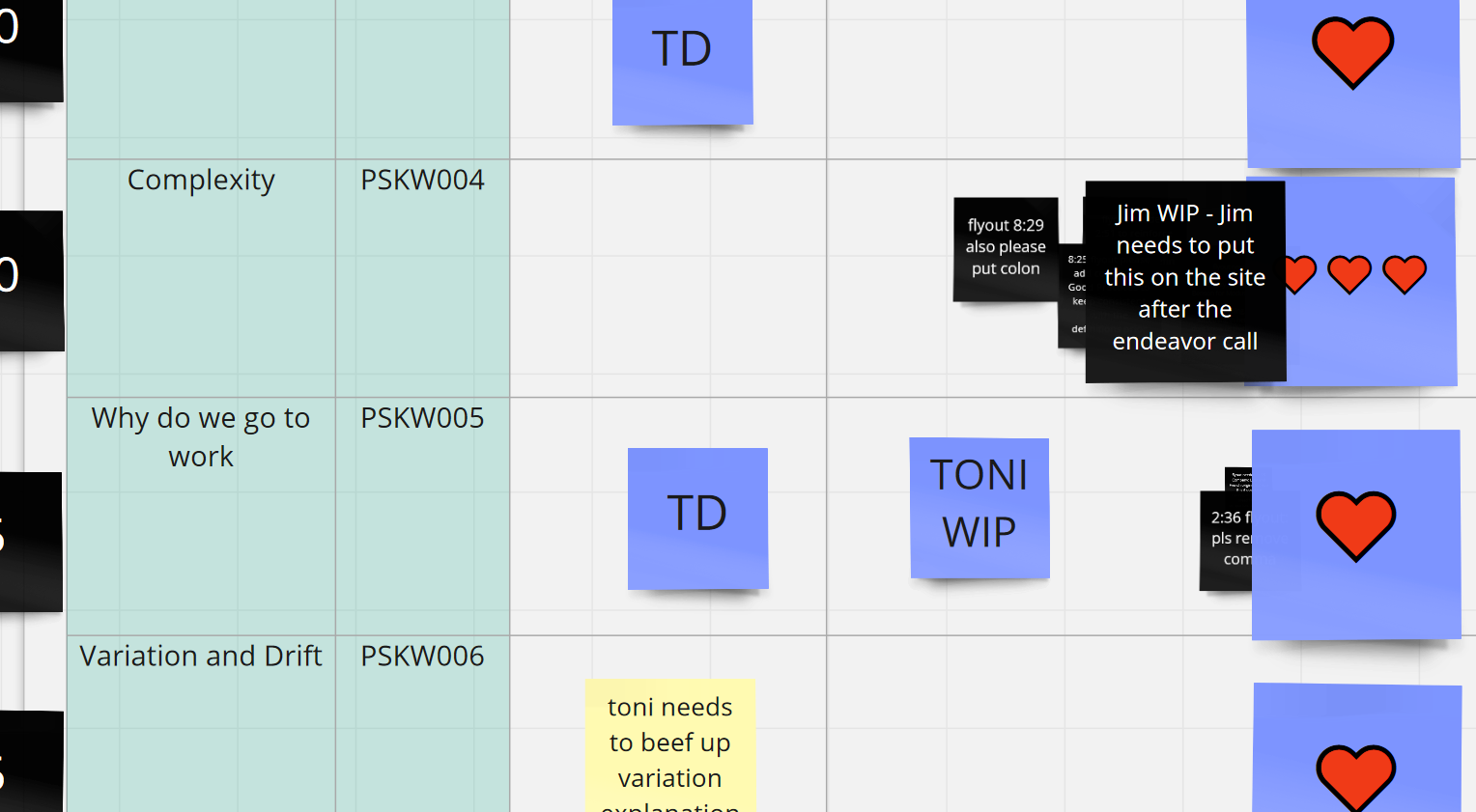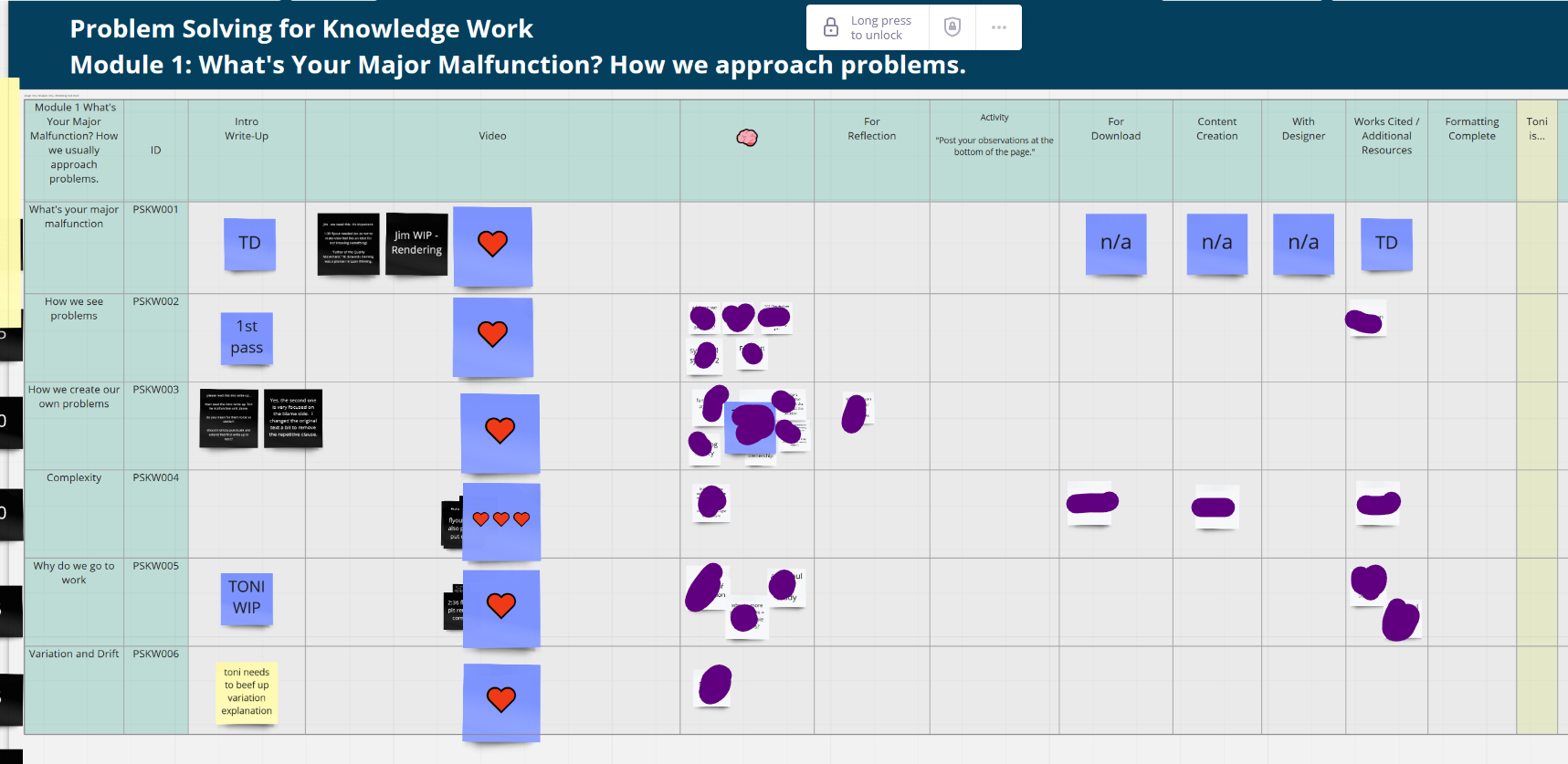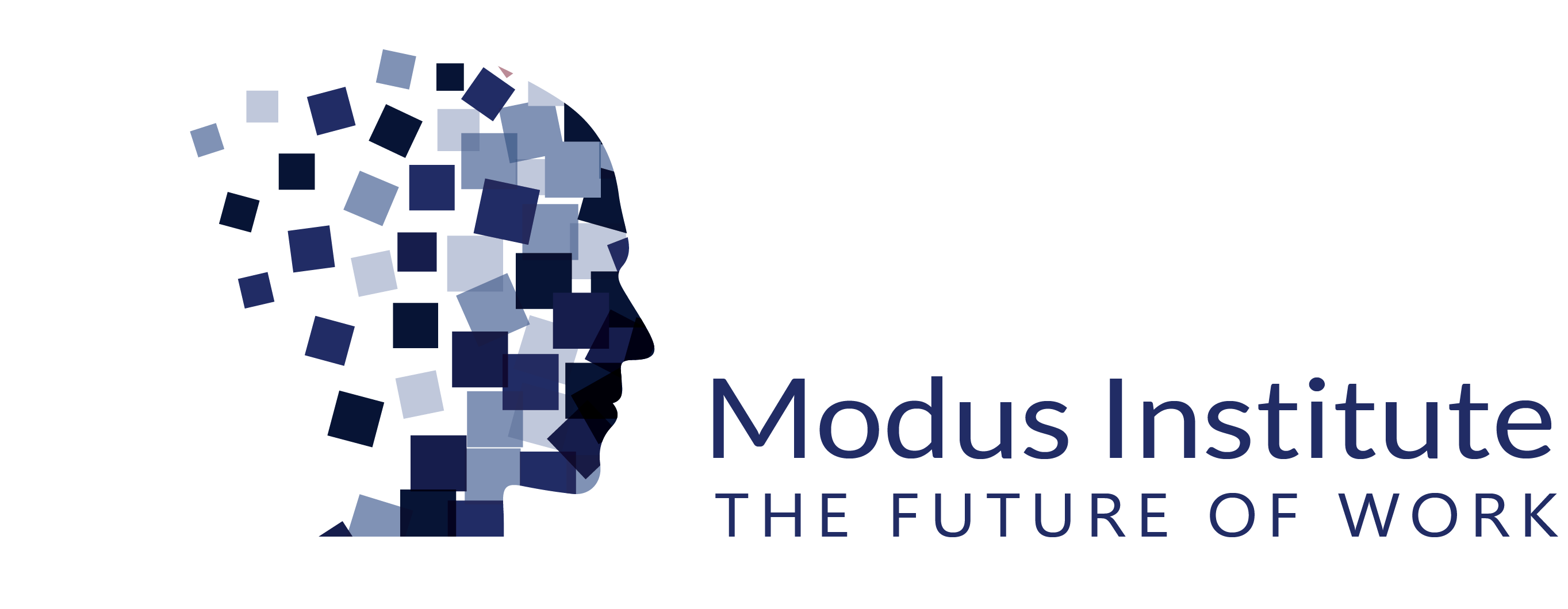Microactions - Always Evolving Obeya
Aug 9
/
Jim Benson
At Modus, we have a small handful of people doing a lot of work. We are not just working on a piece of one thing and then, when it is fully and predictably done, handing it over to the next person. Work is conceived, acted on, exchanged, checked, improved, checked again, integrated, improved again, and implemented. Not necessarily in that order and with an unknown set of exchanges.
Some things are just completed. Others require lots of conversations.
That means we are always waiting on each other. We’re never idle, but work we are anticipating takes up a certain amount of cognitive load. We know the work is coming, we have to get the work done, and we don’t know when to expect it.
Some things are just completed. Others require lots of conversations.
That means we are always waiting on each other. We’re never idle, but work we are anticipating takes up a certain amount of cognitive load. We know the work is coming, we have to get the work done, and we don’t know when to expect it.
The Value of Microactions
Microactions are bits of important information that we exchange to reduce that cognitive load. For example, Tonianne was waiting on the Complexity unit video being put on the site before she could move forward on the write-up. I was working on it and she knew it was rendered and ready to put up. That transfer is usually a 5 minute task, but I was late for a call, so I put in that note saying it’s ready, but hasn’t been made available yet.

That microaction enabled Toni to focus on the writeup for the Why Do We Go To Work unit and knows she doesn’t have to worry about the other video for at least an hour.
These small side-conversations (microactions) in our always evolving Obeya allow us all to focus, to be confident that work is progressing, and to avoid the need for interruption / status based questions. Those questions take a long time to compose, write, receive, interpret, and respond to.
We don’t really consider the hit we take from these avoidable conversations. Things like, “Hey I thought the Complexity video was done already, I saw that you’d edited and rendered it. But I don’t actually see it on the site. Did something go wrong? Did you forget to put it up there?”
The response would be something like, “Yeah, it’s all rendered and ready to go, but I have this endeavor call and I thought I’d be able to finish everything up, but...well you know how it goes. It’s not ready yet, but as soon as I’m off this call, I’ll get right on that. Sorry for the delay.”
And then there would be a reply to that which is, “Oh, okay, sounds good to me. Sorry to bother you.”
All of which would have been happening during the call where I was responding rather than focusing on the call itself.
That one microaction saved not just time and energy, but also made both of us able to focus on our tasks at hand and, presumably, do a more professional job.
These small side-conversations (microactions) in our always evolving Obeya allow us all to focus, to be confident that work is progressing, and to avoid the need for interruption / status based questions. Those questions take a long time to compose, write, receive, interpret, and respond to.
We don’t really consider the hit we take from these avoidable conversations. Things like, “Hey I thought the Complexity video was done already, I saw that you’d edited and rendered it. But I don’t actually see it on the site. Did something go wrong? Did you forget to put it up there?”
The response would be something like, “Yeah, it’s all rendered and ready to go, but I have this endeavor call and I thought I’d be able to finish everything up, but...well you know how it goes. It’s not ready yet, but as soon as I’m off this call, I’ll get right on that. Sorry for the delay.”
And then there would be a reply to that which is, “Oh, okay, sounds good to me. Sorry to bother you.”
All of which would have been happening during the call where I was responding rather than focusing on the call itself.
That one microaction saved not just time and energy, but also made both of us able to focus on our tasks at hand and, presumably, do a more professional job.

This is that whole board as part of the Obeya. As with the other elements, it is constantly radiating the status and content of the evolving work. You can see that the microaction has been removed and status has been replaced with the actions in unit PSKW001. Again, the work does not flow linearly, it is recursive, by the end of today PSKW001 will be largely complete. The Complexity video (as evidenced by the white stickies to the right) still has a ways to go. We know that immediately be looking at them.
The introduction of microactions to the board allows us to have a consistent and constant area for small, crucial conversations.
The introduction of microactions to the board allows us to have a consistent and constant area for small, crucial conversations.
This is What We Do 🥰 - Come Join
If these ideas are interesting, you should check out our Lean Agile Visual Management (LAVM) Program.
Our primary goal is to help people work together in more visual, aligned, and supportive ways. Take a look or chat with us.
The world seriously needs people who can do this.
Our primary goal is to help people work together in more visual, aligned, and supportive ways. Take a look or chat with us.
The world seriously needs people who can do this.


We are an online educational platform that helps professionals and aspiring individuals to succeed in their goals.
Copyright © 2025